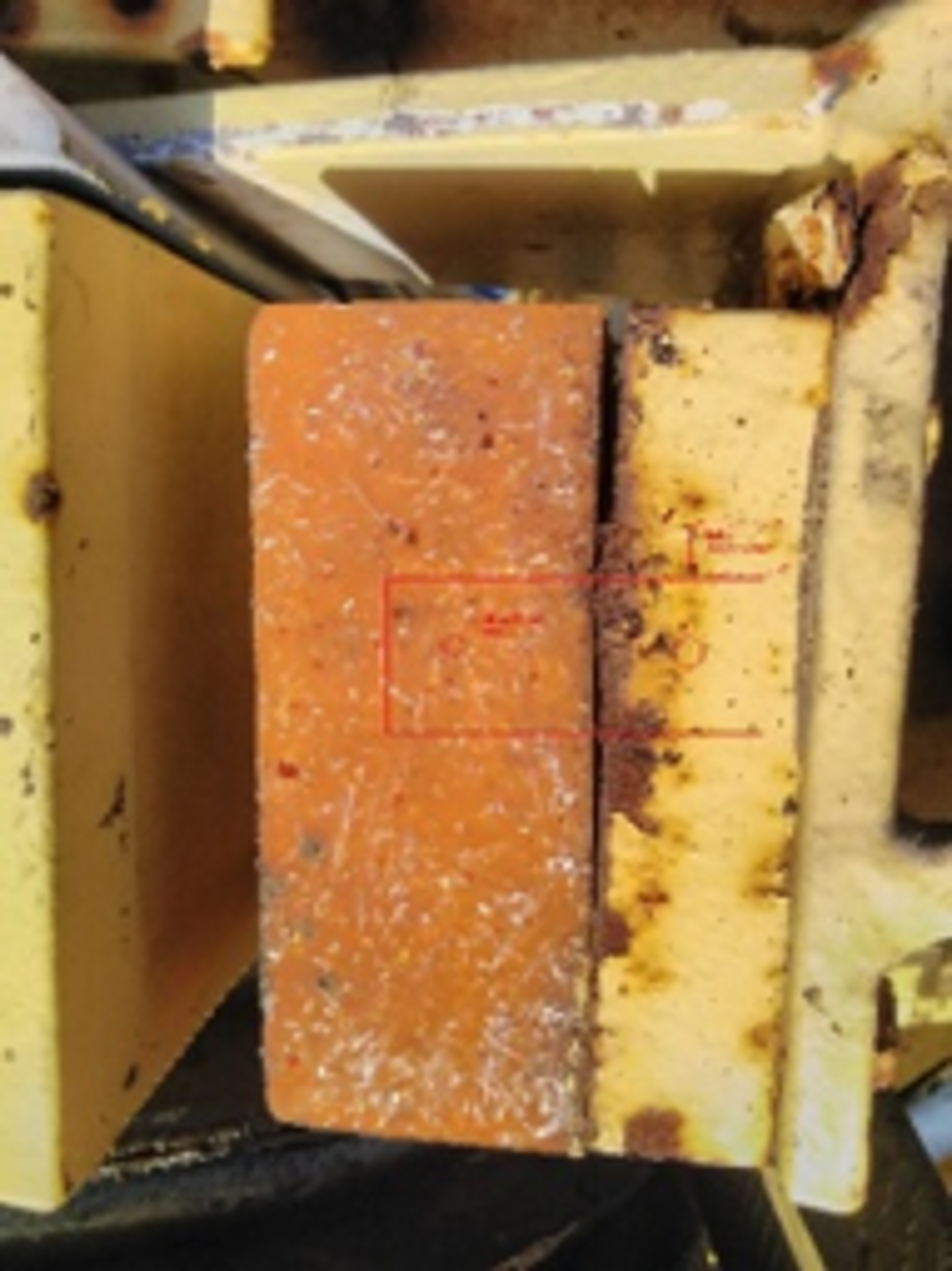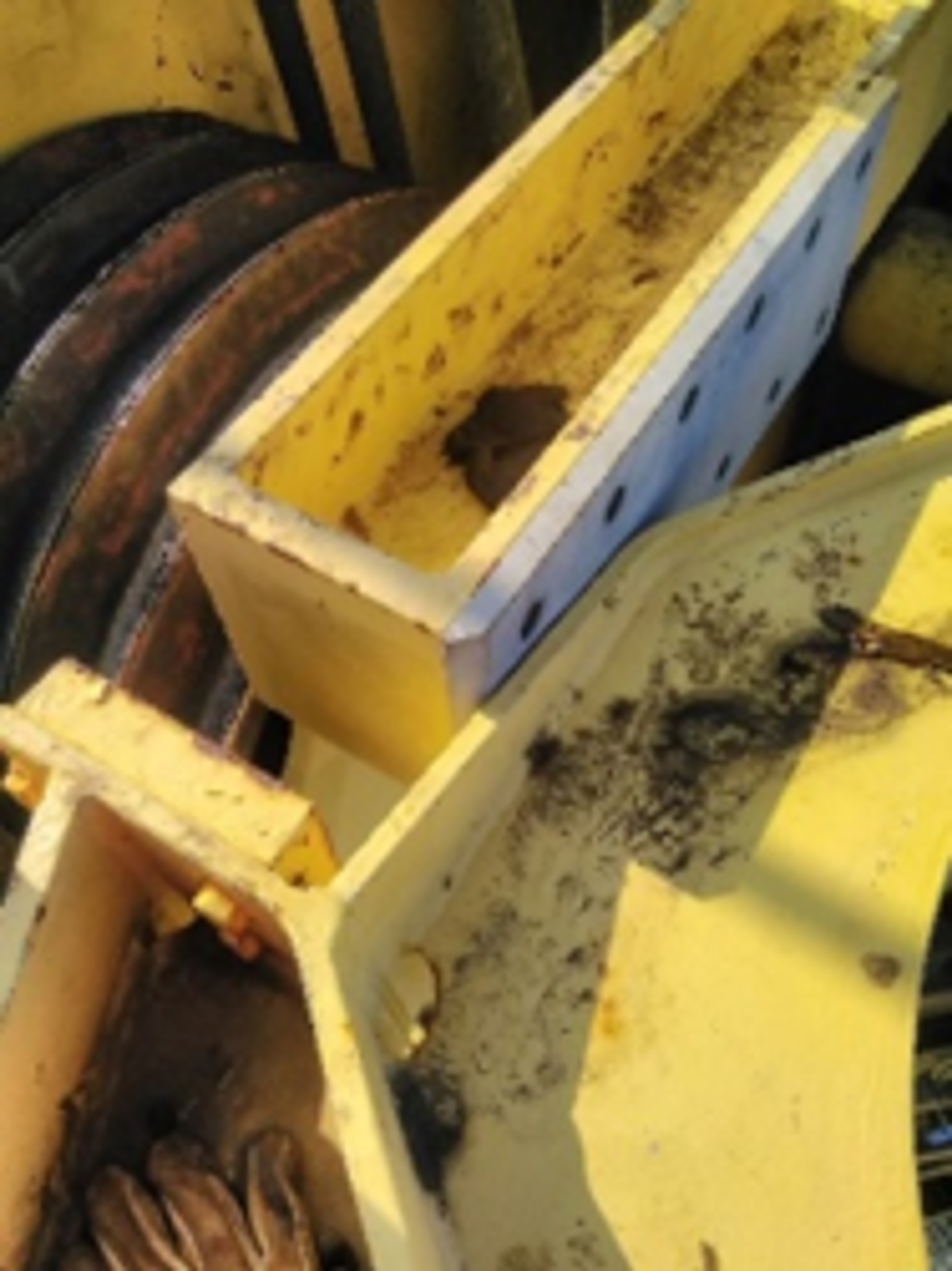Dropped object from crane
- Safety Flash
- Published on 13 February 2020
- Generated on 15 July 2025
- IMCA SF 05/20
- 2 minute read
Jump to:
What happened?
A composite block forming the end stop topping of a crane fell 20 m from the crane to deck. The incident occurred after a Suez Canal transit, when it had been necessary to use the crane to lift a small boat into and out of the water. After clearing the canal, the crane had to be secured for sea. While slewing to the right, the composite block (end stop topping) fell from the top of the crane (a height of 20 m). A number of crew members were within 4 m of where it landed. No-one was injured.

Rust forming

Stopper in place

Stopper missing

Rust on plate

Dropped object
What went wrong?
Investigation revealed that the composite block was only glued instead of drilled and fastened to the crane. Rust came in between the steel plate of the crane and the composite block, which loosened it and caused it to fall off.
The root causes identified were:
- material failure
- inadequate design
- inadequate maintenance.
An inspection was made of the aft crane, where a similar gap was observed between the steel plate and the composite block.
What actions were taken?
Our Member required the following fleet-wide actions:
- Check your own cranes for loose or potentially loose objects and for rust and corrosion and consider engineered solutions to any potential problems identified.
- Consider the area immediately around the crane to be a potential dropped object zone.
- Conduct a fresh dropped object survey on the vessel.
Our Member contacted the crane supplier for advice and subsequently published an internal maintenance bulletin on this topic.
IMCA notes: This incident illustrates the need to continue to pay careful attention to crane maintenance and to the clear risk of parts falling from the crane itself, in addition to managing the risk of objects falling from the load.
Safety Flashes can be searched effectively; rather than draw members attention to just three or four recent incidents involving parts falling off cranes, please browse our safety flash search to see a wider list of incidents involving dropped objects from cranes.
IMCA Safety Flashes summarise key safety matters and incidents, allowing lessons to be more easily learnt for the benefit of the entire offshore industry.
The effectiveness of the IMCA Safety Flash system depends on the industry sharing information and so avoiding repeat incidents. Incidents are classified according to IOGP's Life Saving Rules.
All information is anonymised or sanitised, as appropriate, and warnings for graphic content included where possible.
IMCA makes every effort to ensure both the accuracy and reliability of the information shared, but is not be liable for any guidance and/or recommendation and/or statement herein contained.
The information contained in this document does not fulfil or replace any individual's or Member's legal, regulatory or other duties or obligations in respect of their operations. Individuals and Members remain solely responsible for the safe, lawful and proper conduct of their operations.
Share your safety incidents with IMCA online. Sign-up to receive Safety Flashes straight to your email.